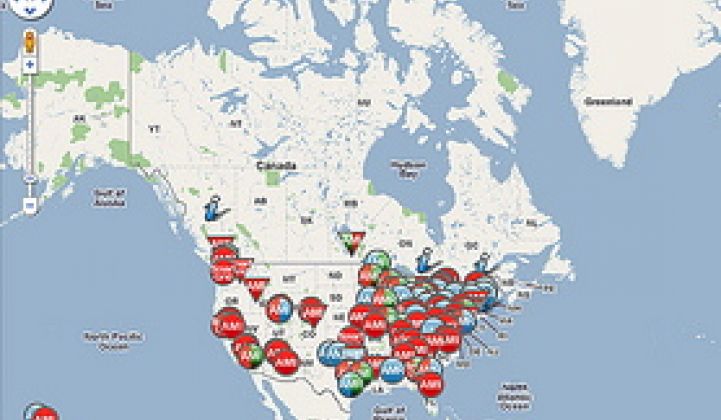North American utilities may be collecting unprecedented amounts of data from their millions of new smart meters — 18,000 percent more data, to be exact. But that doesn’t mean they’re actually doing anything with it.
Those are some of the findings of a new survey from Oracle released Tuesday morning, covering the “big data” challenges and opportunities in the smart grid. The survey of 151 North American utility executives revealed an interesting disconnect between data collection and putting that data to use.
For instance, while 78 percent of respondents said their utilities were collecting outage detection data from their smart meters, only 59 percent were actually using it for business processes and decision-making as of April 2012, when the survey was conducted.
Similar gaps were revealed in voltage data (73 percent collecting it vs. 57 percent using it), tamper detection data (63 percent collecting it vs. 47 percent using it), and diagnostic data (56 percent collecting it and only 33 percent using it).
What’s the explanation? Well, first of all, the results underscore the varied levels of advancement in the North American AMI market. About 22 percent of respondents have deployed smart meters to fewer than one-quarter of their customers, for example -- a category that could include utilities that haven’t gone past the pilot project phase. But 65 percent of respondents have rolled out smart meters to three-quarters or more of their customers.
Generally, the more advanced the deployment, the farther along utilities have gotten in actually putting the data they’ve collected to use, noted Linda Jackman, group vice president for Oracle’s utilities global business unit. That means that some of the gap between collecting and using data could be made up of utilities that just haven't had the time to get to it yet.
Still, there's plenty of room for improvement in smart meter data management, according to the survey. One of the more surprising findings is the relatively low number of utilities that have implemented meter data management software to handle their smart meters. Only 46 percent of respondents said their utilities have an MDM in place.
Jackman said those that don’t have an MDM are probably either dropping their data straight into Excel files -- something an early-stage pilot project might do -- or using their existing customer information system (CIS) billing systems.
That’s OK for billing, but not too much use for putting smart meter data to work for such things as outage detection, power quality sensing, conservation voltage reduction and other grid operations features, she noted. Indeed, about 70 percent of utilities with an MDM in place reported themselves well-prepared to manage the smart meter data challenge, versus 51 percent without MDM that said they were well-prepared.
Oracle has a stake in pushing utilities to tackle their big data challenges, of course, given that it provides meter data management, customer information systems and other software for nearly 2,500 utility customers.
But the survey makes it clear that Oracle isn’t making up the big data disconnect that the survey reveals. Indeed, utilities seem aware of the need to shrink these gaps between data collection and data use, with 64 percent reporting it is one of their top three priorities.
Beyond installing MDM software and making use of data being collected, Oracle suggested that the next big step for utilities is to break down the silos that now separate data ownership into different departments, and start considering it enterprise-level data. That, of course, will require that utilities have an enterprise data strategy in place, as well as the software to bring lots of disparate data into an enterprise view.
That, in turn, sounds like a potential project for Oracle, as well as big data smart grid competitors like IBM, Itron, eMeter/Siemens, Ecologic Analytics/Landis+Gyr and others.



